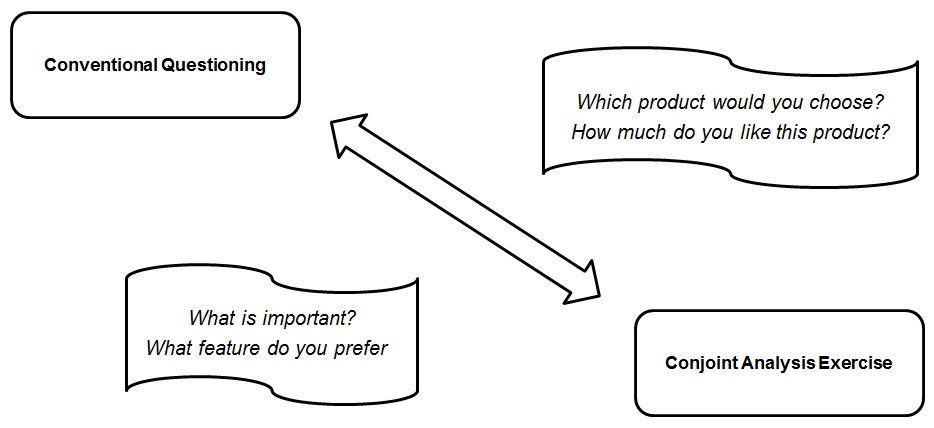Conjoint Analysis is a popular market research quantitative technique used to explore customers’ preference systems. It was developed as an alternative and more reliable approach to conventional questioning when estimating preferences for products features.

Conjoint analysis is considered ‘better’ than conventional questioning for a number of reason:
- Completeness: in conjoint, respondents assess complete products (and trade-off product features)
 rather than assessing one feature at-a-time, thus the exercise is more realistic and similar to real-world decisions.
rather than assessing one feature at-a-time, thus the exercise is more realistic and similar to real-world decisions. - Differentiation: if asked directly about a list of features, respondents are likely to state that everything is important, leading to low differentiation of scores and, thus, potentially not useful data.
- Realism:
- preference for one product feature might depend on other features characterizing the product (i.e., interactions between attributes);
- respondents tend to say what is expected, but tend to choose what is really preferred;
- analysis of preferences through behavior (as in conjoint) is usually considered better than analysis through attitudes (as in direct questioning).
The Conjoint Paradigm
“A perfect product or service is rarely available, but lesser alternatives are.”
In a conjoint analysis exercise respondents are forced to trade-off competing desirable features, thus it is possible to uncover their latent or hidden preferences.
R-sw Conjoint is a R-sw module developed for Advanced Conjoint Analysis. It is the only commercial software that allows analyzing Rank-Based and Allocation-Based Conjoint data. It also allows analysis of Choice-Based Conjoint data.
Moreover, R-sw Conjoint is the only commercial software that comes with fully-customizable Excel simulators for conjoint data. And if that is not enough, there are two different types of simulators, to address different research needs!
